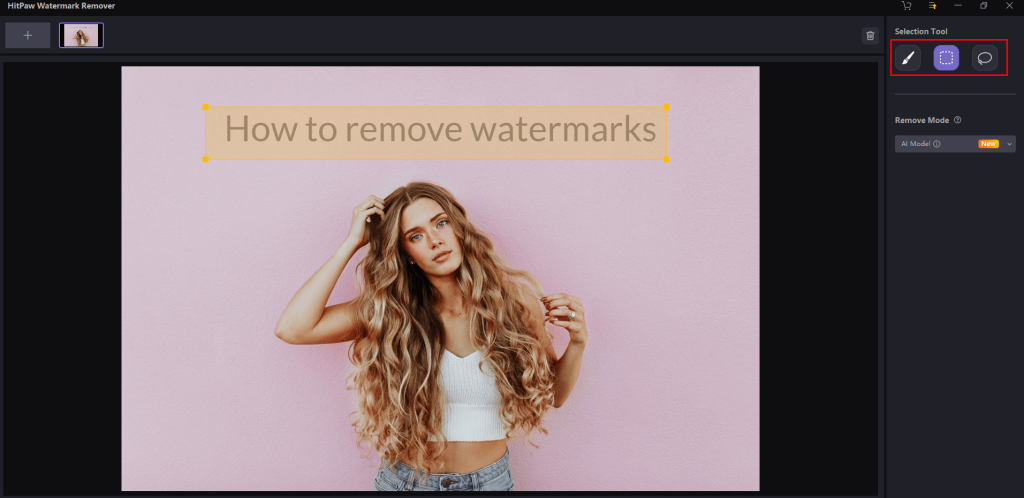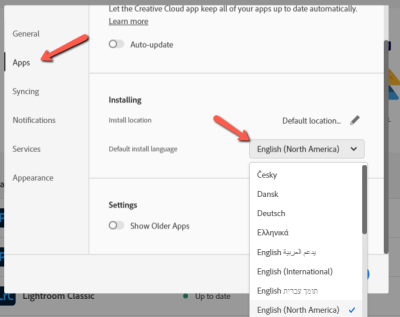If you’ve ever come across a stunning image on Shutterstock but found it watermarked, you might wonder how to get a clean, watermark-free version. Watermarks are there to protect the creator’s rights, but sometimes, you might need a clear photo for personal projects or presentations. In this guide, we’ll explore the ins and outs of watermarks—what they are, why they’re there, and the legal ways to handle them. Remember, always respect copyright laws and use images ethically. Let’s dive into understanding these watermarks better and see what options are available for removing them responsibly.
Understanding When and Why Watermarks Are Applied

Watermarks are like digital signatures plastered across images to prevent unauthorized use. Shutterstock applies watermarks to preview images to give you a glimpse of the photo’s quality and composition before you decide to purchase or license it. Think of it as a sneak peek—without revealing the full, high-resolution image. These watermarks typically consist of semi-transparent text or logos overlaying the picture, making it clear that the image is protected intellectual property.
So, why do they do this? Well, it’s all about protecting photographers and artists from theft or misuse. Without watermarks, anyone could easily download and use images without paying or crediting the creator. By adding a visible mark, Shutterstock ensures that only paying customers get access to the clean, high-quality versions. This system encourages fair compensation for creators and maintains the value of their work.
Watermarks are usually applied during the preview stage—you see them when browsing the Shutterstock website or in search results. If you want to use the image without a watermark, you’ll need to purchase a license or subscription. Once you’ve paid, Shutterstock provides a high-resolution, watermark-free version of the image, legally cleared for your intended use.
Understanding this process is key: attempting to remove watermarks without proper authorization isn’t just unethical but also illegal. Instead, focus on obtaining images legally through licensing or explore free image resources if you’re on a tight budget. Remember, respecting creators’ rights helps keep the creative industry thriving!
Legal Considerations for Removing Watermarks

Before we dive into the how-to, let’s talk about the importance of understanding the legal landscape surrounding watermarks. Watermarks are more than just a design element—they’re a clear sign that the image is protected by copyright and owned by someone else. Removing them without permission can lead to serious legal trouble, including fines or lawsuits.
When you see a watermark on a Shutterstock image, it means the photo is licensed, and the watermark is there to prevent unauthorized use. Using or removing the watermark without purchasing a license is considered copyright infringement. This could violate intellectual property laws and Shutterstock’s terms of service.
Even if your intention is just to remove the watermark for personal use, it’s important to recognize that doing so without proper authorization is illegal. If you want to use an image legally, the best route is always to purchase the appropriate license. That way, you’re respecting the creator’s rights and avoiding potential legal issues.
Additionally, some images might have specific licensing restrictions. Always read the licensing agreement carefully. If you’re unsure whether a particular use is permitted, it’s a good idea to consult a legal expert or reach out directly to Shutterstock for clarification.
In summary:
- Watermarks indicate copyright protection.
- Removing watermarks without permission is illegal.
- Always acquire the proper license for use.
- Respect intellectual property rights to avoid legal issues.
Remember, respecting creators’ rights not only keeps you on the right side of the law but also supports the artists and photographers who work hard to produce amazing images.
Methods to Remove Shutterstock Watermarks Legally and Ethically

Now, onto the good stuff—how can you access high-quality images from Shutterstock without crossing legal boundaries? The straightforward and ethical way is to purchase a license. Here’s how you can do it:
1. Purchase a License from Shutterstock
This is the most direct and legal method. When you find an image you love, simply buy the license. Shutterstock offers various licensing options—such as standard or enhanced licenses—depending on your intended use. Once you’ve purchased, you’ll receive a version of the image without the watermark, ready for your project.
2. Use Shutterstock’s Download Options
Shutterstock often provides different download options for licensed images. Make sure to select the appropriate one that grants you the rights to use the image as needed. This way, you get access to high-resolution, watermark-free images legally.
3. Explore Subscription Plans
If you frequently need images, consider subscribing to Shutterstock’s plans. They offer a cost-effective way to access a wide library of images without watermark overlays. Just remember, once you’ve purchased or subscribed, always download images through official channels to ensure legality.
4. Creative Alternatives
If purchasing images isn’t within your budget, consider:
- Using free stock photo websites like Unsplash or Pexels, which offer high-quality images with licenses that generally allow free use without watermarks.
- Creating your own photos or commissioning a photographer to produce custom images.
- Utilizing public domain images that don’t have copyright restrictions.
5. Editing for Personal Use Only (If Legally Allowed)
In some cases, if you have a license, you might be allowed to edit or crop images for your specific project. But remember, removing watermarks by editing isn’t legally or ethically justified unless you’ve purchased the rights. Always check the licensing agreement and use images within those boundaries.
In conclusion, the best approach is to obtain images legally through licensing or free sources. Not only does this keep you on the right side of the law, but it also respects the hard work of creators and photographers. Ethical use ensures that artists continue making beautiful work, and you get high-quality images without the risk of legal issues. Happy and responsible image sourcing!
Using Photo Editing Software to Remove Watermarks
So, you’ve got a photo with a Shutterstock watermark, and you’re wondering how to get rid of it without much fuss. One way people often consider is using photo editing software. While it might sound straightforward, it’s important to approach this method with a clear understanding of what’s involved—and the legal considerations.
Popular tools like Adobe Photoshop, GIMP, or even some online editors can help you remove watermarks. Typically, the process involves using tools such as the clone stamp, healing brush, or content-aware fill. Here’s a quick rundown of how it works:
- Open the Photo: Load your image into the editing software.
- Select the Watermark: Use selection tools to carefully highlight the watermark area.
- Remove or Cover the Watermark: Use the clone stamp or healing brush to paint over the watermark, blending it with the surrounding pixels.
- Refine the Edit: Zoom in and adjust as needed to make the edit seamless and natural-looking.
- Save the Image: Once satisfied, save your photo in the desired format.
While this sounds simple, keep in mind that removing watermarks convincingly requires patience and a good eye for detail. Sometimes, the result can look unnatural if not done carefully, especially if the background is complex or textured.
Another point worth mentioning is that removing watermarks without permission or a license can be legally questionable. Watermarks are there to protect copyright, and removing them might infringe on intellectual property rights. If you plan to use the image publicly or commercially, it’s best to pursue legal routes or obtain a licensed copy.
Alternative Ways to Obtain Watermark-Free Photos Legally
Instead of trying to remove watermarks after the fact, why not get your hands on images that are already watermark-free and legally yours to use? There are plenty of legitimate options to consider that won’t land you in hot water legally or ethically.
Here are some reliable ways to find high-quality, watermark-free photos:
- Purchase a License: The most straightforward way is to buy the image directly from Shutterstock or other stock photo sites. Once purchased, you usually receive a high-resolution, watermark-free version that you can use without worry.
- Use Free Stock Photo Websites: Websites like Unsplash, Pexels, and Pixabay offer a vast collection of images that are free for personal and commercial use. These images are typically provided under licenses that allow free use without attribution, although it’s always good to double-check the licensing details.
- Subscribe to Stock Photo Services: Many platforms offer subscription plans that give you access to thousands of images without watermarks. This can be more cost-effective if you need a variety of images regularly.
- Create Your Own Photos: If you have the time and resources, taking your own photographs ensures complete control over the content and licensing. Plus, it adds a personal touch to your projects.
- Request Permission: If you find a perfect image with a watermark, consider reaching out to the creator or copyright holder for permission. Sometimes, they might grant you a license or provide a watermark-free version directly.
Remember, respecting copyright laws and the work of photographers is essential. Not only does this keep you legally safe, but it also supports artists and creators who put time and effort into their work. Using images ethically and legally ensures your projects stay professional and above board.
Tips to Avoid Watermarks When Downloading Shutterstock Images
Let’s be honest — nobody wants to deal with watermarks when they’re trying to use a stunning stock photo. They’re distracting, unprofessional, and just plain annoying! The best way to avoid watermarks is to follow the proper channels and be a responsible user. Here are some practical tips to help you do just that:
- Subscribe or Purchase Legitimately: The most straightforward way is to buy a license or subscribe to Shutterstock. When you do this, you get access to high-quality, watermark-free images that you’re allowed to use legally.
- Use the Download Preview Option: Shutterstock offers low-resolution preview images without watermarks. These are meant for review and planning, not for final use. Always make sure to download the full, licensed version when you’re ready to publish.
- Register for an Account: Creating an account often gives you access to special offers, discounts, and the ability to purchase images directly. Plus, it keeps your licensing records organized.
- Leverage Free Alternatives: Sometimes, you can find free stock photo websites that offer high-quality images without watermarks. Sites like Unsplash or Pexels are great options, but always check their licensing requirements.
- Be Careful with Unauthorized Sources: Avoid downloading images from unofficial sites or shady sources. These often host pirated images with watermarks or worse, malware.
Remember, respecting copyright isn’t just about avoiding legal trouble — it’s about supporting the creators who put time and effort into making beautiful images. So, always aim to acquire images through legitimate channels, and you’ll never have to worry about watermarks sneaking into your projects.
Conclusion and Best Practices for Using Stock Photos
Using stock photos like those from Shutterstock can really elevate your projects, whether it’s a website, a presentation, or social media content. But with great power comes great responsibility! To make the most out of stock images and stay on the right side of licensing rules, here are some best practices to keep in mind:
Respect Licensing Agreements
Always read and understand the licensing terms attached to each image. Some images are for personal use only, while others can be used commercially. Ignoring these rules can lead to legal issues down the line.
Use Watermarks as a Guide, Not a Final Product
If you’re testing out images, watermarked previews are perfect for visualizing your project. But never use watermarked images in your final work. Always replace them with licensed, watermark-free versions.
Give Proper Attribution When Required
Some stock photos require attribution. If that’s the case, make sure to credit the photographer or Shutterstock accordingly. It’s a small effort that supports creators and keeps you compliant.
Organize Your Assets
Keep track of your licensed images, licenses, and purchase receipts. Having organized records makes it easier to prove you have the rights to use specific images if ever questioned.
Be Creative and Ethical
Stock photos are a fantastic resource, but don’t rely solely on them. Combine images creatively, customize them to suit your project, and always respect the original creators’ work.
In summary, stock photos are a powerful tool when used responsibly. Stick to legitimate sources, understand licensing, and treat creators with respect. That way, you’ll enjoy stunning visuals without any worries, and your projects will look professional and trustworthy!


